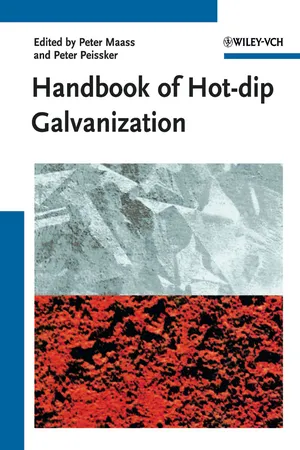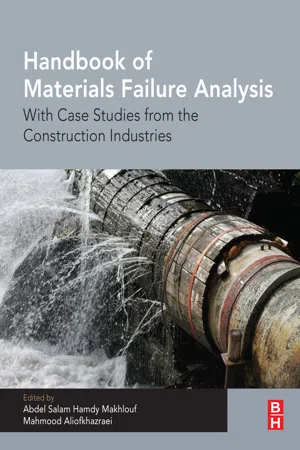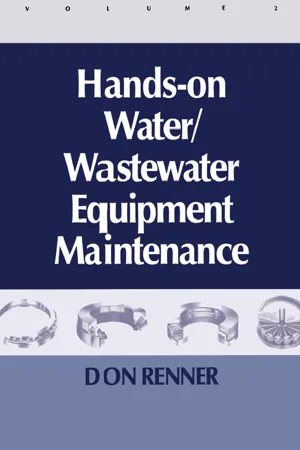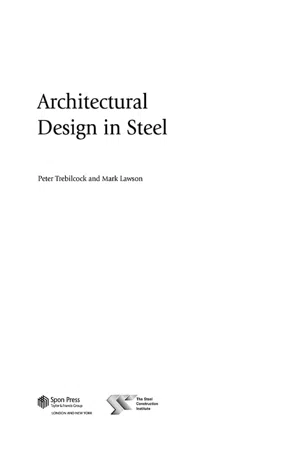Corrosion Protection
Corrosion protection refers to the methods and materials used to prevent or slow down the degradation of metal surfaces due to chemical or electrochemical reactions with their environment. This can include the application of protective coatings, such as paints or corrosion-resistant metals, as well as the use of inhibitors or cathodic protection systems to mitigate the effects of corrosion.
7 Key excerpts on "Corrosion Protection"
- Zaki Ahmad(Author)
- 2006(Publication Date)
- Butterworth-Heinemann(Publisher)
...Corrosion engineering involves designing of corrosion prevention schemes and implementation of specific codes and practices. Corrosion prevention measures, like cathodic protection, designing to prevent corrosion and coating of structures fall within the regime of corrosion engineering. However, corrosion science and engineering go hand-in-hand and they cannot be separated: it is a permanent marriage to produce new and better methods of protection from time to time. 1.8 INTER-DISCIPLINARY NATURE OF CORROSION The subject of corrosion is inter-disciplinary and it involves all basic sciences, such as physics, chemistry, biology and all disciplines of engineering, such as civil, mechanical, electrical and metallurgical engineering. 1.9 CORROSION EDUCATION The subject of corrosion has undergone an irreversible transformation from a state of isolated and obscurity to a recognized discipline of engineering. From the three universities in USA which offered courses in corrosion in 1946, corrosion courses are now offered by almost all major technical universities and institutions in USA, UK, Europe, Southeast Asia, Africa and Japan. Corrosion is now considered as an essential component of design. Learned societies like National Association of Corrosion Engineers, European Federation of Corrosion, Japan Society of Corrosion Engineers and others are playing leading role in the development of corrosion engineering education. Detailed information on corrosion education, training centers, opportunities in corrosion can be found in various handbooks and websites. Some sources of information are listed in the bibliography...
- eBook - ePub
- Peter Maaß, Peter Peißker, Christine Ahner, Peter Maaß, Peter Peißker(Authors)
- 2011(Publication Date)
- Wiley-VCH(Publisher)
...Table 1.3) a). 1.2.2 Commercial Relevance The demands placed on components, constructions, products, plants, and structures of steel are inter alia, high operational reliability; long service life; good decorative design; high corrosion resistance; high performance; and high environmental compatibility. Here, a permanent task is the reduction in material input, size, nonrecurring, and regular costs. This goal determines the application of corrosion-protection methods as well as the development trend and direction of Corrosion Protection. Corrosion Protection is not considered an end in itself, but part of the product development, manufacturing and utilization, and sometimes even part of the base materials or semifinished products. In view of corrosion damages in the amount of 50 bn Euro the German economy sustains every year, exclusive of corrosion damages in the private sector, the implementation of the research findings on Corrosion Protection and their consequent application allow for annual reductions of approx. 15 bn Euro. The aim of the continuous information efforts is to achieve Corrosion Protection not as good as possible, but as good as required. Decisive for the efficiency of Corrosion Protection is not the initial protection cost, but the annual or specific Corrosion Protection costs in consideration of the protection period of the respective Corrosion Protection system and the service life of the products. More attention should be paid to the connection between product development, product quality, material handling, maintenance, environmental protection, and Corrosion Protection, which should take into account corrosion-damage protection in the planning and design phase – despite all influencing factors – as well as static safety against breakage, stability of buildings and operational safety regarding performance and service life. 1.2.3 Corrosion Protection and Environmental Protection Corrosion has its roots in the environment...
- eBook - ePub
- Atul Tiwari, Lloyd Hihara, James Rawlins(Authors)
- 2014(Publication Date)
- Butterworth-Heinemann(Publisher)
...Chapter 1 Electrochemical Aspects of Corrosion-Control Coatings L.H. Hihara Hawaii Corrosion Laboratory, Department of Mechanical Engineering, University of Hawaii at Manoa, Honolulu, Hawaii, USA Abstract Corrosion of metals is an electrochemical process and is affected by moisture content, the chemical environment, and the electrochemical state of the metal. How the properties of a coating or coating system affect the above parameters governs the effectiveness of the coating in suppressing corrosion. Fundamental electrochemical aspects of corrosion are discussed, as well how coating properties (i.e., barrier characteristics and electrical resistivity, chemical and electrochemical) affect the corrosion behavior of the substrate metal. Barrier protection, corrosion inhibition, and cathodic protection as they relate to coatings are discussed. Keywords Corrosion Protection Coatings Barrier Corrosion inhibition Cathodic protection 1.1 Introduction In nature, almost all metals are found in their thermodynamically stable states which are ores that are comprised primarily of oxides, sulfides, and halides. 1 Energy must be expended to extract the elemental metals from the ores. Hence, as soon as the elemental metals are extracted from their ores, they have a propensity to revert back to their thermodynamically stable compounds. In most cases, metals will form oxides when exposed to moisture. If the oxide is porous or does not have good adhesion to the substrate metal, the metal will actively corrode. If the oxide forms a compact impervious layer and has good adhesion, the metal will passivate, resulting in excellent corrosion resistance. In environments that contain aggressive ions, however, the passive film can breakdown, resulting in localized corrosion and very high corrosion rates...
- eBook - ePub
- Abdel Salam Hamdy Makhlouf, Mahmood Aliofkhazraei(Authors)
- 2018(Publication Date)
- Butterworth-Heinemann(Publisher)
...Chapter 6 Corrosion and protection of the metallic structures in the petroleum industry due to corrosion and the techniques for protection Abdel Salam H. Makhlouf * Victor Herrera ** Edgar Muñoz ** * Central Metallurgical Research and Development Institute, Cairo, Egypt ** University of Texas Rio Grande Valley, Edinburg, TX, United States Abstract Corrosion is affecting the metallic structures’ stability of the industry and putting at risk the safety of the employees and environment. This chapter emphasizes explaining the common types of corrosion damages that can be present in the oil and gas industry and details of the mechanism of material failure and the possible ways for protection. The petroleum industry is facing the deterioration of metal surfaces in their working environment due to the electrochemical process of corrosion. It’s one of the industries that is spending the most money of the total corrosion expenditure all over the world. Corrosion is an economical problem that must be addressed to provide a safer environment that prolongs the life of material, minimizing the risk of environmental issues and catastrophes. A good way to address this problem is by studying the characteristics of each of the corrosion problems and the best way to minimize or eliminate the reasons for corrosion. Keywords corrosion galvanic series oxidation–reduction petroleum industry metallic structures pitting corrosion transgranular cracking 1. Introduction The oil and gas industry is the leading source of energy that is facing corrosion since its beginning. According to the National Association for Corrosion Engineering (NACE), the energy industry is taking the most part of the total expenditure of corrosion-related problems in the United States—an annual cost of $1.372 billion. From the total amount, the industry is spending $589 million in surface pipelines and plant cost, $463 million annually in downhole tubing, and $320 million in everything else related to corrosion...
- Barbara Renner(Author)
- 2017(Publication Date)
- Routledge(Publisher)
...Special attention must be given to building designs in order to limit and control vapor drift. 9.18 In addition to the chemicals that directly cause corrosion, there are other less noticeable types of chemical corrosion. Many sources include them as a type of galvanic corrosion because of their action on metallic materials. This text, however, is including them in the chemical section because they cause a chemical breakdown in metal components. 9.19 Intergranular, hydrogen (embrittlement and permeation), sulfide, graphite, oxidation, and dezincification all use a chemical imbalance between the components basic materials and an electrolyte or the chemical compounds themselves to weaken the base material. Sometimes, the weakening is accelerated by above normal temperatures. Generally, however, it is simply the reaction between the chemical and the base material that breaks down the structural strength of the base material. 9.20 There is no way that corrosion can ever be eliminated. But, there are many ways to control it, and in some cases prevent it before it really gets started. The easiest way to control corrosion is to select materials that are the least likely to corrode. In some cases, especially where structural strength is required, this is not possible. The next best thing to do is to protect the material from corroding, or to control the amount of corrosion that can take place. For those materials that cannot be totally protected, the best thing to do is to maintain a good preventive maintenance schedule that will constantly monitor the equipment, and schedule replacement of the components before they fail. MATERIAL SELECTION—METALS 9.21 The selection of any material that is to be used in a treatment plant requires a knowledge of the environmental conditions to which the material will be subjected...
- eBook - ePub
- Volkan Cicek, Bayan Al-Numan(Authors)
- 2011(Publication Date)
- Wiley-Scrivener(Publisher)
...Chapter 14 Corrosion in Engineering Materials 14.1 Introduction The engineering community is interested in many materials, but the most important and widely used are the structural steel and reinforced concrete. The civil engineer is required to check that these materials withstand not only the tensile and compressive stresses, but also the effects of various complex stress systems and corrosion. Corrosion of steel is known by engineers as the result of electrochemical reaction when different potentials are developed by electrically connected metal parts in contact with a solution containing free ions. The so-called electrode potential is dependent on the particular metal and the nature of the solution. Comparative values of electrode potentials may be measured against a standard electrode-electrolyte system. For example, if hydrogen is considered of zero V electrode potential, then lead, iron, zinc and aluminum potentials are 0.13, 0.44, 0.75 and 1.66 V, respectively. When a metal is placed in an electrolyte and different electrode potentials are generated, current flows through the system, causing attack on the more anodic metal (i.e., the metal with the more negative electrode potential). The cathodic metal (i.e., the metal with the more positive electrode potential) remains unattacked...
- eBook - ePub
- Mark Lawson, Peter Trebilcock(Authors)
- 2004(Publication Date)
- Taylor & Francis(Publisher)
...Chapter 12 Corrosion Protection The cost of Corrosion Protection can be as high as 20% of the total cost of fabricated steelwork, and it is therefore important not to over-specify the protective system, whilst achieving an acceptable life to first maintenance. Corus has prepared various publications 47 to assist the designer in the protection strategy. The following notes supplement the guidance given by Corus. Corrosion of steel can only occur if both oxygen and water are present. The rate of corrosion will depend on the exposure and on the concentration of containments (usually chlorides and sulphides) in the atmosphere. Thus, permanently embedded steel piles do not corrode, even though they are in contact with water, provided that air is excluded by the impermeability of the soil. Similarly, the interior faces of tubular sections will not corrode, provided they are sealed. Within buildings, only minor and superficial oxidation may occur, except in areas such as roofing or cladding, which may be subject to condensation or water leakage. 12.1 Internal steelwork Inside heated buildings, where the steel is concealed from view, no protective coating is generally required. Consequently, it is now practice to use unprotected steelwork, except where the steel penetrates the envelope. For largely visual reasons, a thin coat (25 microns) of shop primer may be applied before delivery to site. Where the steel is exposed to view internally, a decorative coat (often an alkyd) on a suitable primer (usually a zinc phosphate) may be applied. If an intumescent paint is used as fire protection, advice should be sought from the specialist paint manufacturer to ensure compatibility between it and any decorative coating. Steelwork within perimeter walls is more susceptible to corrosion, particularly if the steel is in contact with, or embedded in, the outer leaf of a masonry wall...






